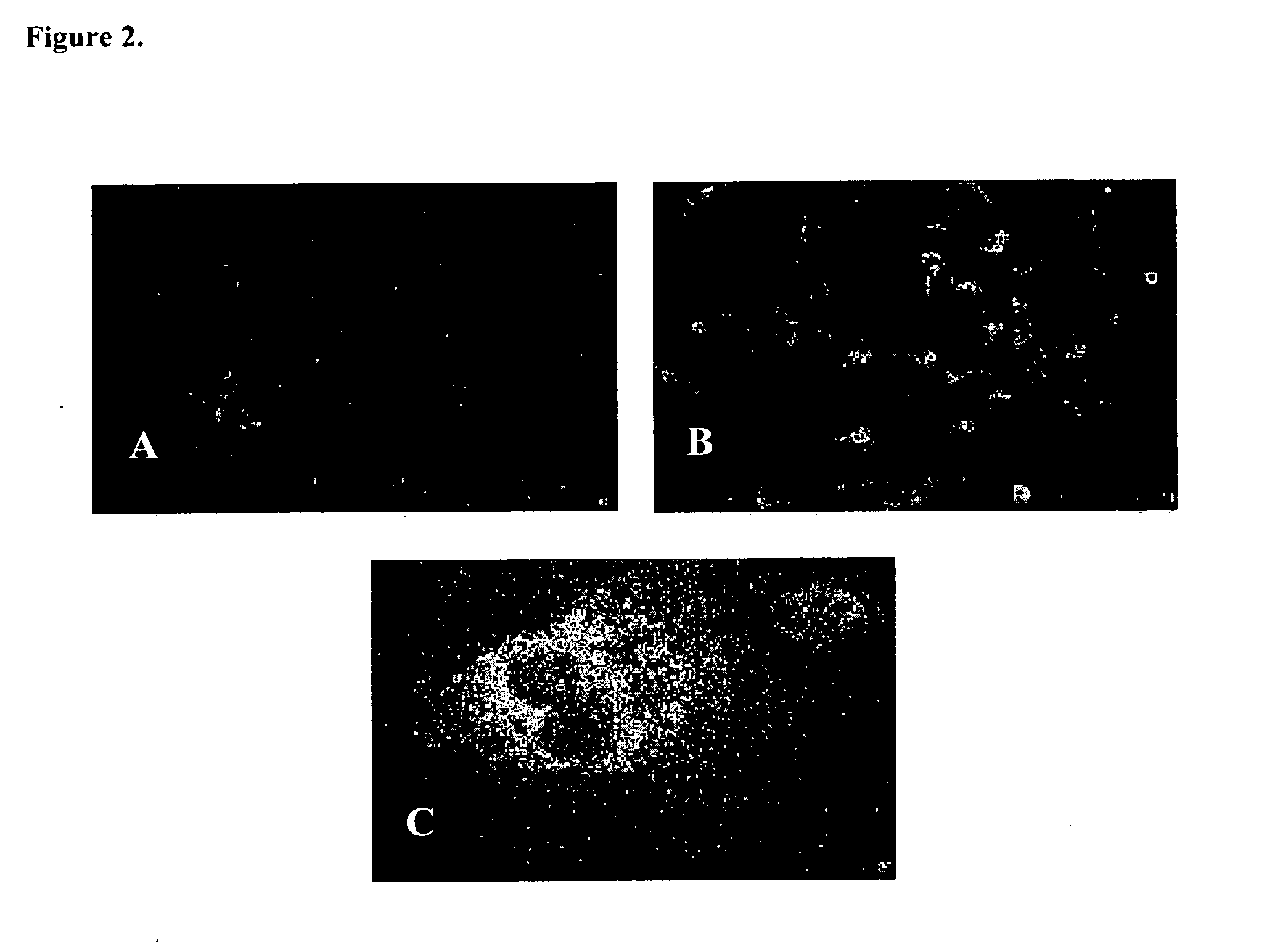Treatment of presbyopia with picolinic acid and its analogs
a technology of picolinic acid and presbyopia, which is applied in the field of treatment of presbyopia with picolinic acid and its analogs, can solve the problems of inadequate treatment, no medical treatment for presbyopia, bifocals or monocular contact lenses, etc., and achieve the effects of treating or preventing eye disorders, and inhibiting the growth of lens epithelial cells
- Summary
- Abstract
- Description
- Claims
- Application Information
AI Technical Summary
Benefits of technology
Problems solved by technology
Method used
Image
Examples
example 1
Materials and Methods
[0031] Porcine eyes were procured from a local slaughterhouse. All tissue culture products, PA and its analogs were purchased from Sigma-Aldrich (St. Louis, Mo.). The rabbit anti-αB-crystallin antibody was purchased from Biodesign International (Saco, ME); the goat anti-rabbit immunoglobulin G (IgG) antibody from Vector Labs (Burlingame, CA); and the DNA fragmentation detection kit from Oncogene Research Products (Boston, Mass.).
[0032] Isolation of Porcine Lens Epithelial Cells
[0033] The porcine eyes, obtained within 2 hours of sacrifice, were dissected under sterile conditions. The cornea was excised, and the anterior capsule was punched with an 8.00 mm trephine and gently removed with forceps. The contents of the capsular bag were easily prolapsed, and the posterior portion of the lens capsule was left attached to the sclera by the ciliary body and zonules. The remainder of the sclera, below the plane of the posterior lens, and vitreous were cut away. The a...
example 2
Structures and Properties of PA Analogs
[0044] First, the PA analogues were constructed on a personal computer using the model-builder tool box within HyperChem software (Hypercube Inc., Gainesville, Fla.). Then, PM3, semi-empirical method, was used to identify the geometry of each compound at its lowest energy for the neutral, ground state structures. The settings for this procedure were as follows: a spin multiplicity of 1. a restricted Hartree-Fock method for spin pairing, a no-configuration interaction, a self-consistent field (SCF) convergence limit of 0.1, and a maximum iteration limit of 50 without accelerated convergence. The Polak-Ribiere conjugate-gradient algorithm, a geometry optimizing procedure, terminated when the Root-Mean Square (RMS) gradient reached 0.005 kcal / A mol). After optimization, the partial charges were calculated on nitrogen and the adjacent carbon C2, containing the carboxylic group to examine the charge distribution of the structures. Mulliken's method...
example 3
Growth of PLE cells
[0045] The PLE cells grew from the periphery of the lens capsule margin and took about 2 weeks to become confluent (FIG. 1) on the posterior lens capsule in 10% FCS / MEM. The extent of wrinkling of the posterior capsule was a function of the density of the cells. In general, the equatorial regions had a greater density of epithelial cells and exhibited greater wrinkling compared with the center of the posterior capsule. Fluorescent staining with a rabbit polyclonal primary antibody against αB-crystallin specifically stained PLE cells. Examination at high magnification showed the staining to be localized in the cytoplasm (FIG. 2a, 2b). Further evidence that the PLE cells were showing the αB-crystallin was confirmed by the presence of a low molecular weight band in SDS-PAGE, which co-migrated with purified α-crystallins, and was detected through the staining in Western blot analyses with the rabbit antiαB-crystallin antibody (FIG. 3). This band was absent in PLE cel...
PUM
| Property | Measurement | Unit |
|---|---|---|
| Molar density | aaaaa | aaaaa |
| Molar density | aaaaa | aaaaa |
| Molar density | aaaaa | aaaaa |
Abstract
Description
Claims
Application Information
 Login to View More
Login to View More - R&D
- Intellectual Property
- Life Sciences
- Materials
- Tech Scout
- Unparalleled Data Quality
- Higher Quality Content
- 60% Fewer Hallucinations
Browse by: Latest US Patents, China's latest patents, Technical Efficacy Thesaurus, Application Domain, Technology Topic, Popular Technical Reports.
© 2025 PatSnap. All rights reserved.Legal|Privacy policy|Modern Slavery Act Transparency Statement|Sitemap|About US| Contact US: help@patsnap.com



